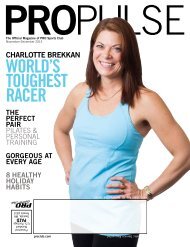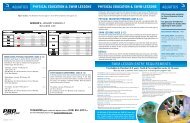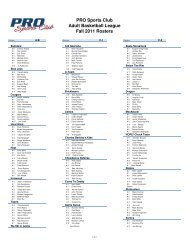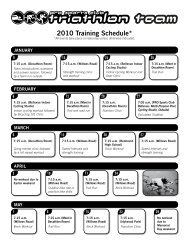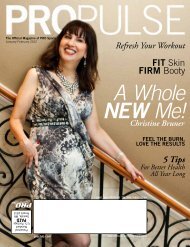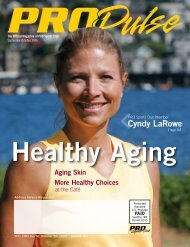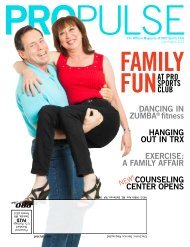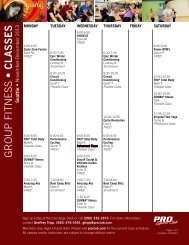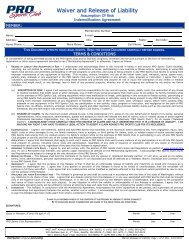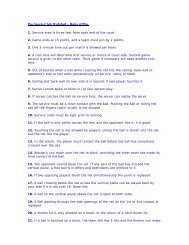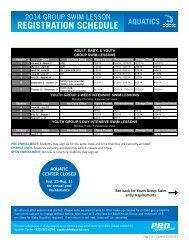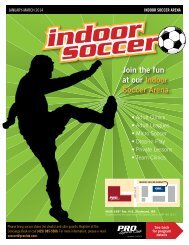You also want an ePaper? Increase the reach of your titles
YUMPU automatically turns print PDFs into web optimized ePapers that Google loves.
orthopedics<br />
pro sports club<br />
Photos: istockphoto.com<br />
Time for That Summer Break?<br />
By Pierce E. Scranton, M.D.<br />
Most organized sports usually start with a<br />
pre-season training camp where players work<br />
on skills and conditioning. Spring brings preseason<br />
camps for baseball, lacrosse, and track.<br />
July brings “two-a-days” for football and soccer.<br />
For those of us who participate in recreational<br />
sports, clubs, leagues, or seasons, it makes sense<br />
to point our conditioning to excel at or enjoy that<br />
sport during its season. On the flip side, what should we be doing<br />
during the off-season?<br />
Anyone over forty will tell you that, over the years, it gets harder to<br />
stay in shape. For example, if you like to ski, you start easing into<br />
shape sometime in September and get serious about conditioning<br />
by December. That way, you can enjoy (and not endure) the ski<br />
season into March. If you’re not in peak condition, you tire more<br />
easily. Your mind remembers what your body used to do, but<br />
when you try to jump back into sports, you pull a muscle, tweak a<br />
tendon, or discover that a reflex is not quite as sharp. You get hurt.<br />
So as we get older, it becomes more imperative to maintain some<br />
form of conditioning even during the off-season.<br />
Withdrawal from regular exercise can have negative effects on<br />
both body and mind. Some of these are intuitive or obvious, while<br />
others are more subtle. For example, if you stop working out,<br />
you’d naturally expect muscles to atrophy and stamina to decline.<br />
However, your joints’ articular chondrocytes also need motion<br />
to stimulate joint fluid production and a healthy, strong articular<br />
surface structure. No exercise leads to weaker, stiffer joints.<br />
Some individuals need to dump stress after a hard day at work.<br />
Others crave the release of the “endorphin rush,” the after-effects<br />
of prolonged anaerobic activity. Not getting a chance to release this<br />
stress can create anxiety and/or depression.<br />
There are some interesting effects that were described at a national<br />
neuroscience meeting showing the benefits of routine exercise in<br />
animal models. Animals allowed to exercise form new neurons<br />
in the memory center of the brain, the hippocampus. After three<br />
weeks of daily exercise these animals problem-solve better than<br />
their non-exercise controls. Further, when subjected to stress,<br />
they cope with it better. If they’re then prohibited from exercise,<br />
by three weeks the new neuron formation declines and they<br />
eventually revert back to levels of the non-exercise group.<br />
So if you’re over 40 and enjoy recreational sports, consider<br />
maintaining some degree of conditioning such as a lighter balance<br />
of cardio workouts and strength training so you don’t fall back and<br />
lose your edge. Besides losing strength and endurance as we age,<br />
more subtly, we also lose reflexes, balance, and flexibility.<br />
In future issues of <strong>PRO</strong> Pulse we’ll explore two disciplines that you<br />
can apply, when you’re not training hard, to excel in an upcoming<br />
sport: Pilates and yoga. These activities build core strength,<br />
confidence, balance, flexibility, and an inner peace to help with<br />
everyday stress. Stay tuned.<br />
proclub.com 31



